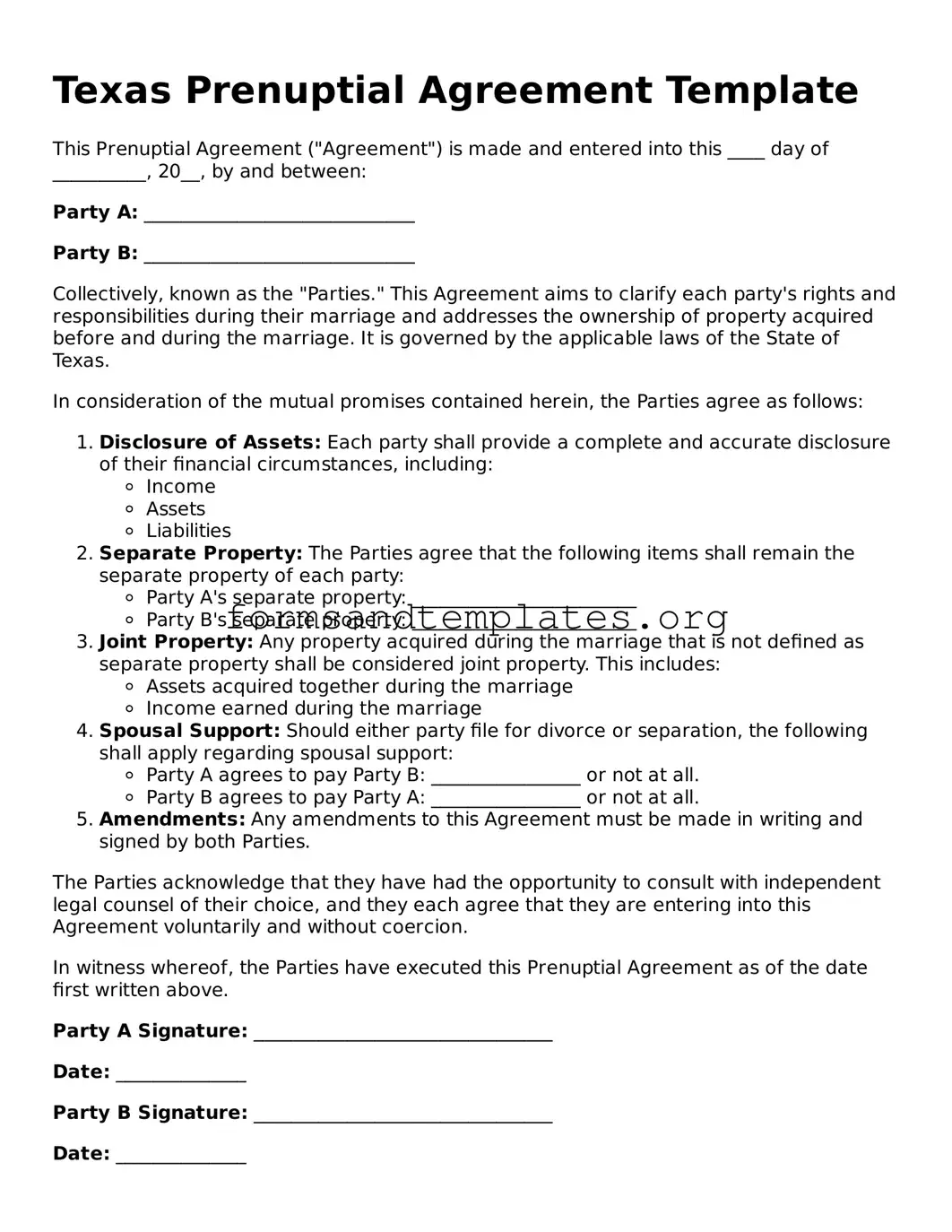Texas Prenuptial Agreement Template
This Prenuptial Agreement ("Agreement") is made and entered into this ____ day of __________, 20__, by and between:
Party A: _____________________________
Party B: _____________________________
Collectively, known as the "Parties." This Agreement aims to clarify each party's rights and responsibilities during their marriage and addresses the ownership of property acquired before and during the marriage. It is governed by the applicable laws of the State of Texas.
In consideration of the mutual promises contained herein, the Parties agree as follows:
- Disclosure of Assets: Each party shall provide a complete and accurate disclosure of their financial circumstances, including:
- Income
- Assets
- Liabilities
- Separate Property: The Parties agree that the following items shall remain the separate property of each party:
- Party A's separate property: ________________________
- Party B's separate property: ________________________
- Joint Property: Any property acquired during the marriage that is not defined as separate property shall be considered joint property. This includes:
- Assets acquired together during the marriage
- Income earned during the marriage
- Spousal Support: Should either party file for divorce or separation, the following shall apply regarding spousal support:
- Party A agrees to pay Party B: ________________ or not at all.
- Party B agrees to pay Party A: ________________ or not at all.
- Amendments: Any amendments to this Agreement must be made in writing and signed by both Parties.
The Parties acknowledge that they have had the opportunity to consult with independent legal counsel of their choice, and they each agree that they are entering into this Agreement voluntarily and without coercion.
In witness whereof, the Parties have executed this Prenuptial Agreement as of the date first written above.
Party A Signature: ________________________________
Date: ______________
Party B Signature: ________________________________
Date: ______________
